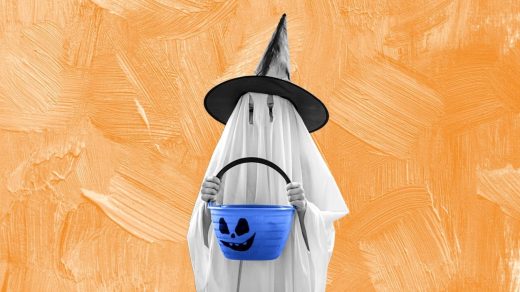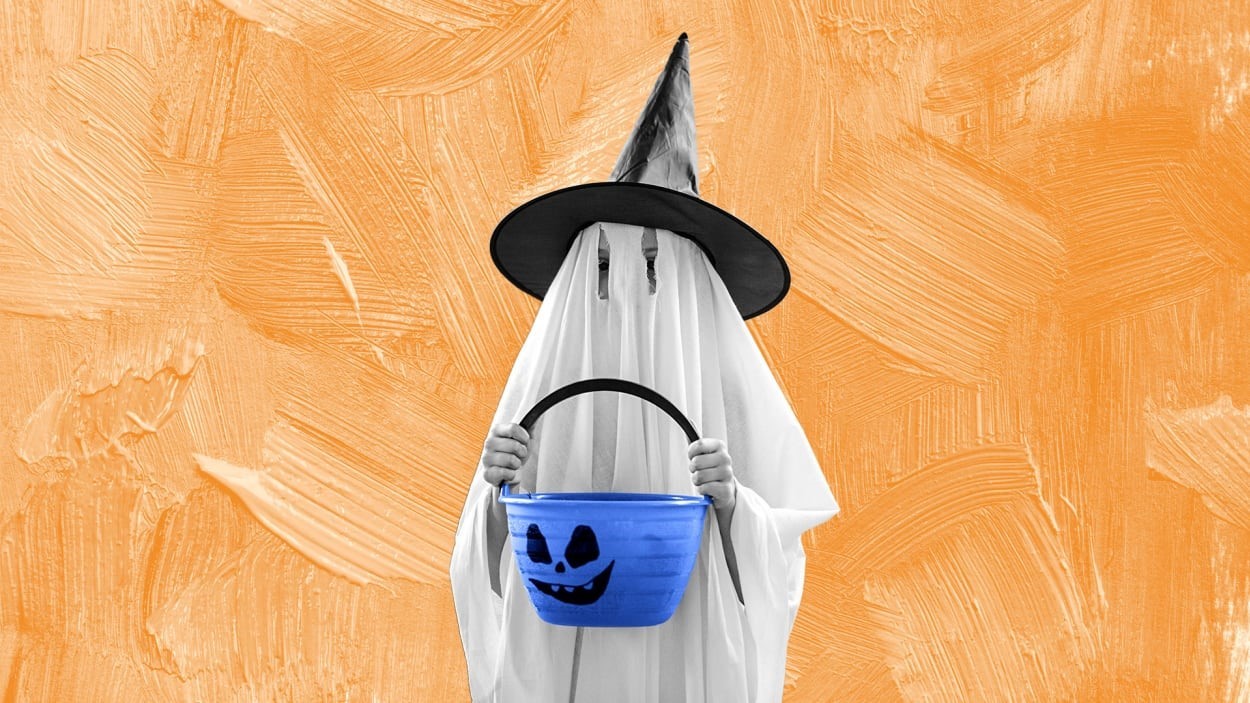If Halloween trick-or-treaters have blue buckets, here’s what it could mean
On Halloween night, you can expect to see dozens of Barbies and Kens; Taylor Swifts, with and without Travis Kelces; every stage of Britney Spears; and, yeah, the classic vampires, ghosts, and zombies. And in addition to seeing trick-or-treaters carrying the traditional orange buckets—or good old-fashioned pillowcases (which, hint-hint, can accommodate way more candy)—you might see a few bright blue buckets being toted around.
The blue bucket trend emerged in 2018, when a mom, Alicia Plumer, posted a photo along with a message on social media, urging people to be kind to her son while he was out trick-or-treating. “If you see someone who appears to be an adult dressed up to trick-or-treat this year carrying this blue bucket, he’s our son! His name is BJ & he is autistic. While he has the body of a 21-year-old, he loves Halloween,” she wrote on Facebook. “Please help us keep his spirit alive & happy. So when you see the blue bucket, share a piece of candy. Spread awareness! These precious people are not ‘too big’ to trick-or-treat,” she added.
With that, blue buckets became a simple way to signal to adults giving out candy that the trick-or-treaters on their doorstep may be neurodivergent. Chains like Target even partnered with the National Autism Association to sell blue buckets as the demand for them grew. The trend has continued year after year, and other colors have even emerged, signifying different things, like teal for children with allergies.
Some parents believe a blue bucket may help their child encounter warmer behavior on Halloween night than they otherwise might, especially when they aren’t able to say “trick or treat” or “thank you” when someone drops candy in their bucket. And it’s difficult for parents of neurodivergent kids to repeatedly explain why their child’s behavior may be a little different than that of other children’s.
However, since the trend started, there have been some critics who’ve come out adamantly against it. For starters, some parents feel it unnecessarily singles out neurodivergent kids. That, and even more to the point: Why do adults need to be told to be kind to kids in the first place?
Jen Malia is an autistic parent and a children’s book author who writes and speaks about autism. She’s the mom of three autistic kids. Malia tells Fast Company that the blue bucket trend is problematic, and that “there is no reason for autistic kids to be segregated from other kids who are trick-or-treating.” She says her kids will have orange buckets, “like they do every year,” and adds that while “most of the time, they do say ‘trick or treat,’” nobody has ever withheld candy if they didn’t.
“If a shy kid came to my door and didn’t say ‘trick or treat,’ I would treat him the same way I treat the rest of the kids and give him candy,” she says. She believes other adults should follow suit.
Practicing kindness, even when kids say nothing at all, should be the standard for adult behavior. Still, the blue bucket trend is well-intentioned. And some parents might prefer it to having to combat snarky comments from grown-ups who think a child is being rude or ungrateful.
In that sense, blue buckets might seem to cater more to impatient adults than neurodivergent children.
Remember that for a lot of kids, Halloween can be scary (and not in a good way). So this particular trend could be a good reminder to try to assume the best and let kids have their candy without any unnecessary commentary—no matter what color bucket they’re holding.
(31)



